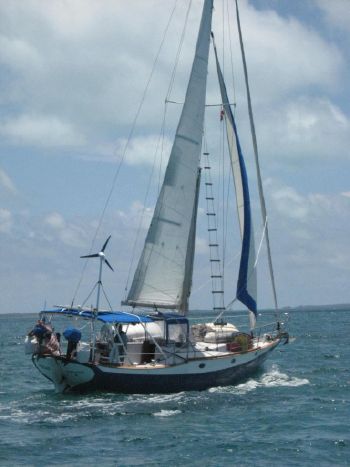10/1/2012
Here's how the windows look now.
So it's coming along...
theboatgalley.com looks like a really neat site on cooking and provisioning.
I came across this discussion today with some really neat points about what makes a blue-water boat. denverd0n makes the point:
[D]on't forget that the Atlantic has been crossed many times in boats less than 20' long, including open boats and rowboats. Or that Captain Bligh sailed more than 3,500 miles across the South Pacific in an open, 23' boat overloaded with 18 men. That was clearly a "blue water" voyage, but hardly comfortable cruising. So the answer really depends--to a HUGE extent--on what you consider important, what you are willing to put up with, and what you are willing to trade off. And only you can answer those questions.Zanshin adds:
[W]hat really makes a vessel bluewater capable is the crew and skipper. Usually the boats are built to withstand more than the crew can; and an only partially "bluewater capable" boat according to ... other criteria with a competant crew will hold up better than the finest bluewater boat with a less than adequate crew.
In days past a boat needed to be built like a tank in order to withstand whatever the seas could throw at it and odds were good that it would at some time come in contact with such extremely heavy weather. With today's access to weather and passage information, the odds of encountering such bad conditions for extended periods of time have gone down, and thus boats can be built differently.
You have 2 competing goals - as a liveaboard vessel you want lots of light and space and freedom of movement aboard. These are "bad" features in the classical defniition of a bluewater boat. The list of diametrically opposed features twixt a liveaboard and bluewater boat goes on; as is often said "Every boat design is a compromise".
